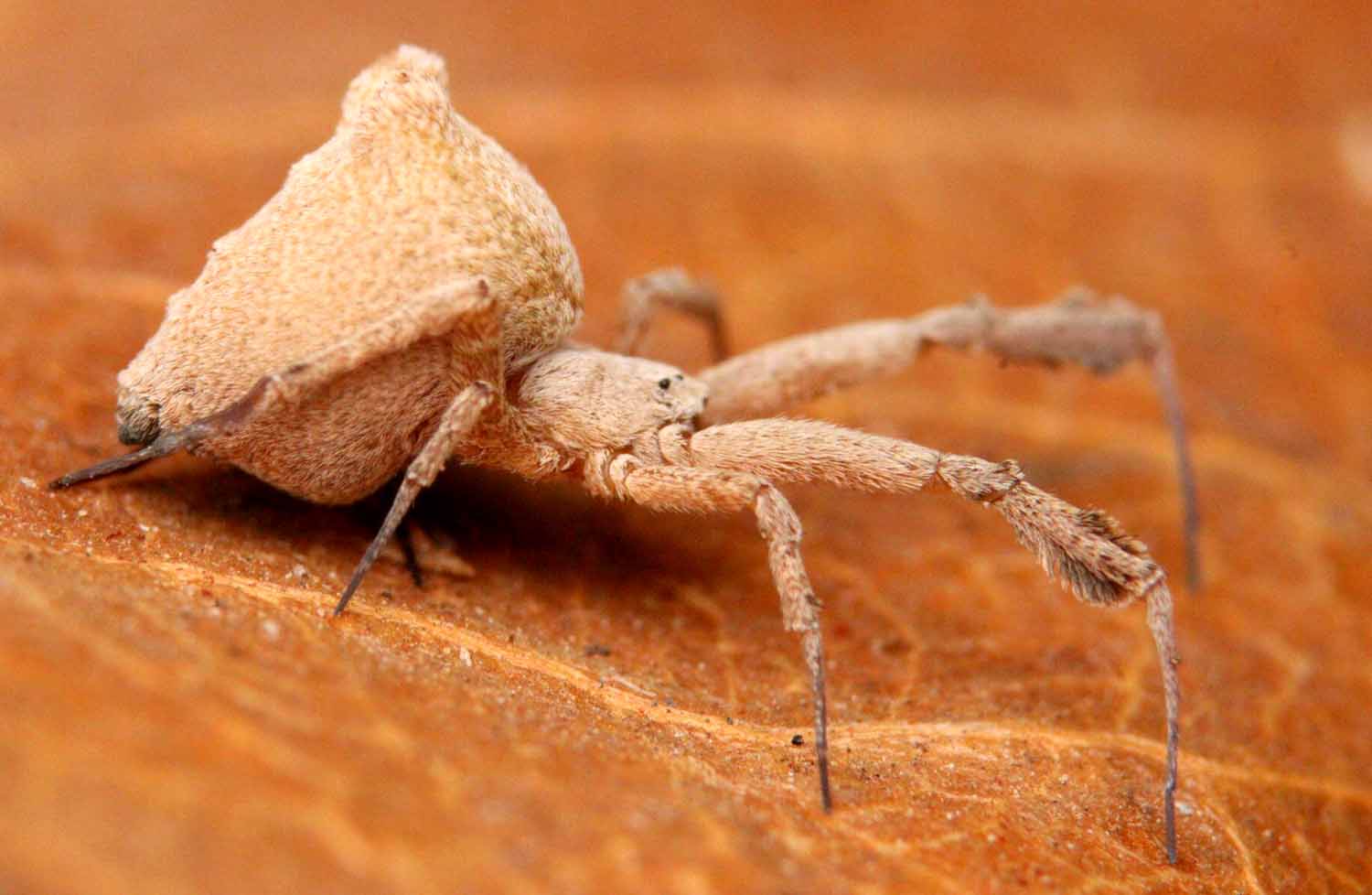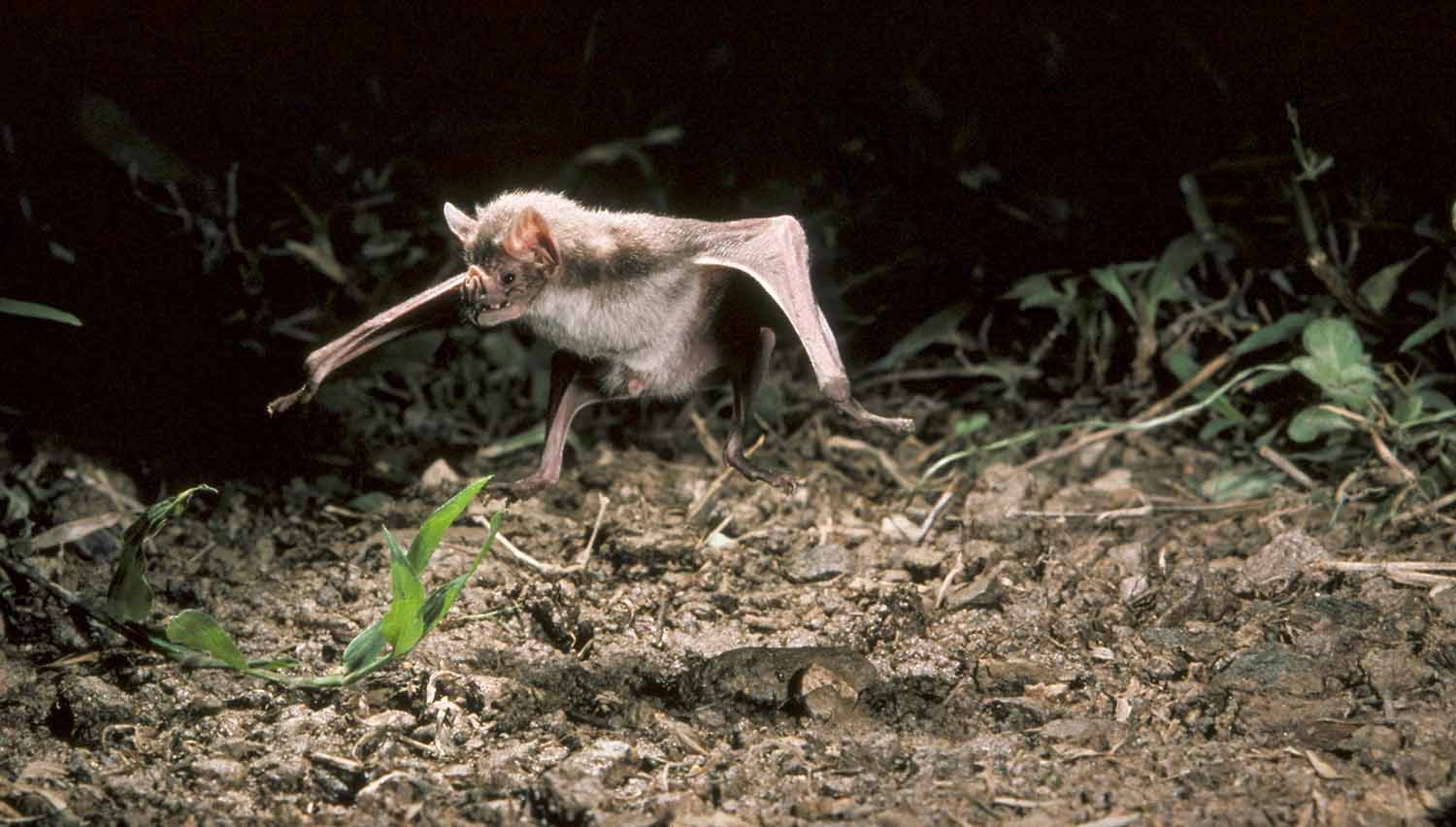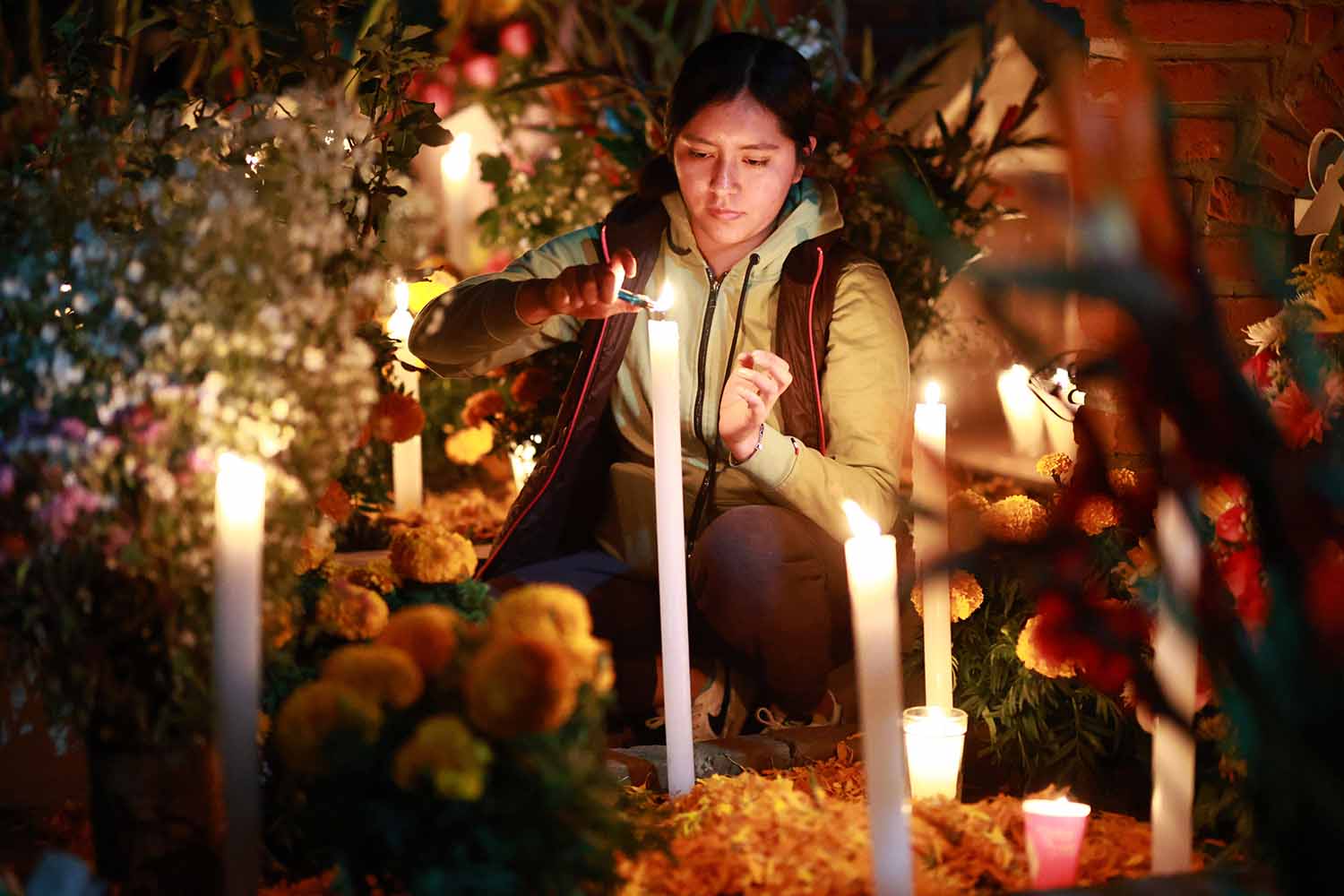All Barf and No Bite
The feather-legged lace weaver spider kills its prey with digestive juices instead of venom.

© piemags—nature/Alamy
The feather-legged lace weaver is found in parts of Africa, Asia, and Europe.
What animal wraps up its food like a mummy and then kills it with toxic puke? The feather-legged lace weaver spider!
It may sound like a spooky riddle, but it’s completely true. This small spider species doesn’t use a venomous bite to kill its meal—it uses deadly barf instead.
The feather-legged lace weaver is a flattish, brown spider that is about half the size of a pea and preys on insects. Though the spider is common across the Middle East, Europe, and Africa, its unusual predation behavior caught scientists’ attention only recently.
Researchers from Switzerland, Germany, and Belgium just published a study detailing the lace weaver’s throw-up-and-then-eat method for feasting. While the spider does have fangs, it cannot produce venom like other spider species do. Instead, it creates a toxin in its digestive system. So, when the spider catches a fly in its web, it wraps the meal in spider silk and then throws up all over it. The venom-like barf kills the insect. Now the spider is ready for lunch.
Though the lace weaver’s food preparation style was first documented in a 1931 scientific paper, it wasn’t until now that researchers confirmed the spider evolved away from a venomous bite.
Since the lace weaver has fangs but no venom, scientists concluded that the species lost its ability to kill with a simple chomp but has kept its toxicity in its digestive juices. For the lace weaver, spider sense really is a gut feeling!



